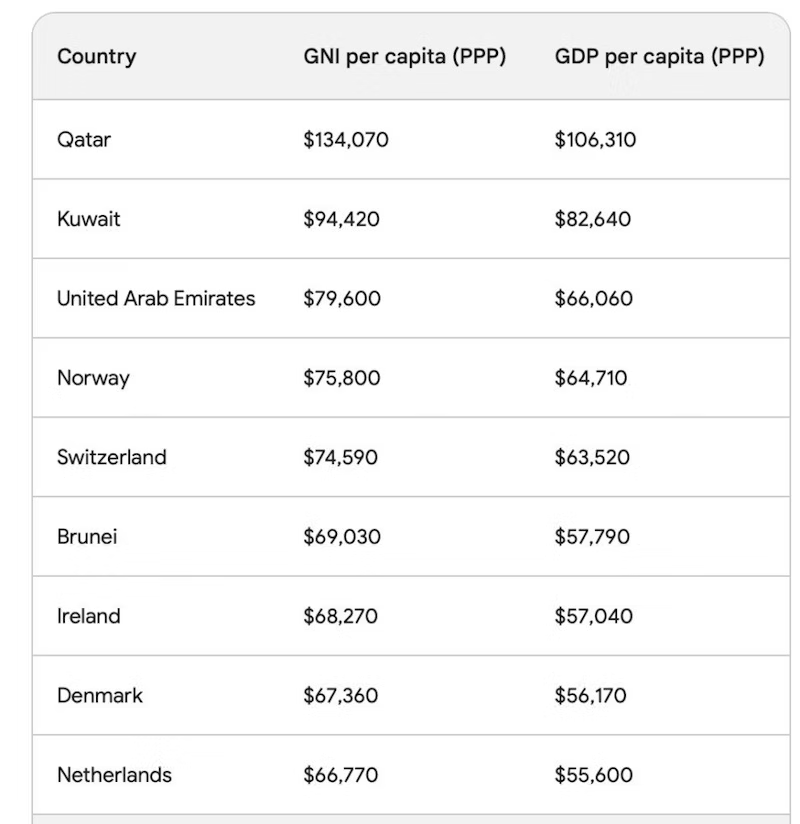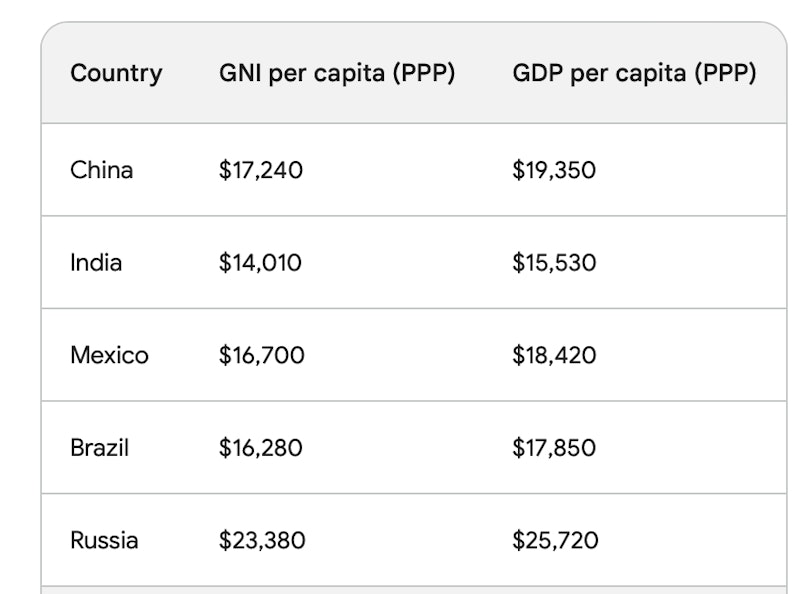Topic Videos
What is the difference between GDP and GNI?
- Level:
- AS, A-Level, IB
- Board:
- AQA, Edexcel, OCR, IB, Eduqas, WJEC
Last updated 26 Jul 2023
GDP (Gross Domestic Product) and GNI (Gross National Income) are both important economic indicators used to measure the economic performance and income generation of a country, but they differ in the scope of their measurements and what they include.
- GDP (Gross Domestic Product): GDP is the total monetary value of all goods and services produced within a country's borders during a specific period, typically a quarter or a year. It includes all economic activities that take place within the country, regardless of whether they are carried out by domestic or foreign entities. GDP accounts for production that happens within the country's geographic territory, regardless of who owns the production factors (labor and capital).
The formula to calculate GDP is the sum of consumption (C), investment (I), government spending (G), and net exports (X - M), where net exports are the difference between exports (X) and imports (M):
GDP = C + I + G + (X - M)
- GNI (Gross National Income): GNI, on the other hand, is the total monetary value of all income earned by a country's residents (both individuals and businesses) from both domestic and foreign sources during a specific period, typically a quarter or a year. It takes into account not only the production that occurs within the country's borders (like GDP) but also the income earned by its citizens and businesses outside the country's borders.
The formula to calculate GNI is as follows:
GNI = GDP + (Net income from abroad)
Net income from abroad is the difference between income earned by the country's residents from foreign sources (such as overseas investments, wages of citizens working abroad, etc.) and income earned by foreign residents within the country.
The main difference between GDP and GNI, therefore, is that GDP measures the total production within a country's borders, whereas GNI measures the total income earned by a country's residents, regardless of where that income is generated.
It's important to note that in the case of a small open economy with a significant international presence (e.g., many multinational corporations or a large number of citizens working abroad), GNI might differ significantly from GDP due to the net income from abroad component. In other cases, when the economy is relatively closed, the difference between GDP and GNI might be smaller.
Here are some countries where GNI is higher than GDP:
- Qatar: Qatar is a small country with a large oil and gas industry. The country receives a lot of income from foreign oil and gas companies, which raises its GNI above its GDP.
- Norway: Norway is a wealthy country with a large sovereign wealth fund. The fund is invested in foreign assets, which generates income for the Norwegian government. This income raises Norway's GNI above its GDP.
The following table shows the countries where GNI is higher than GDP in 2022, according to the World Bank's World Development Indicators:

The following table shows the countries where GNI is lower than GDP in 2022, according to the World Bank's World Development Indicators:

You might also like
Measuring Real National Income
Study Notes
Understanding the Economic Cycle
Study Notes

The Economics of Enough
26th December 2014
Demand and Supply-Side Economic Shocks
Study Notes
GDP Per Head (Economic Well-being)
Study Notes

A History of UK Recessions
30th October 2017

OBR forecasts a long, shallow recession for the UK
18th November 2022